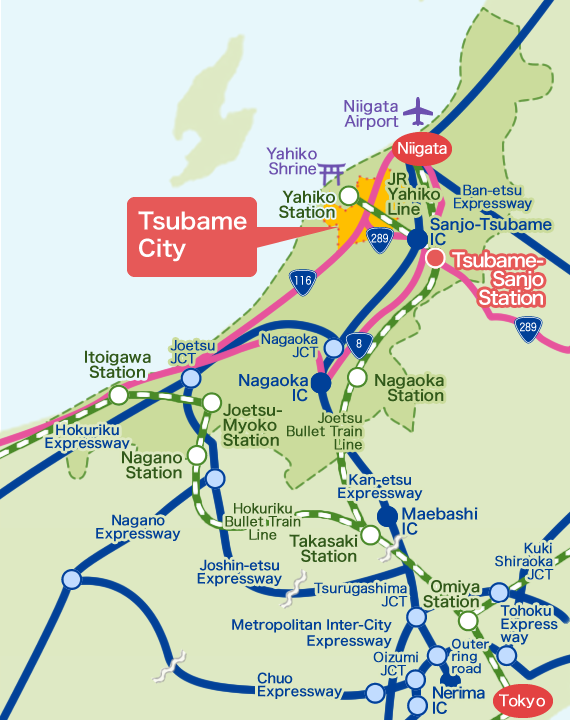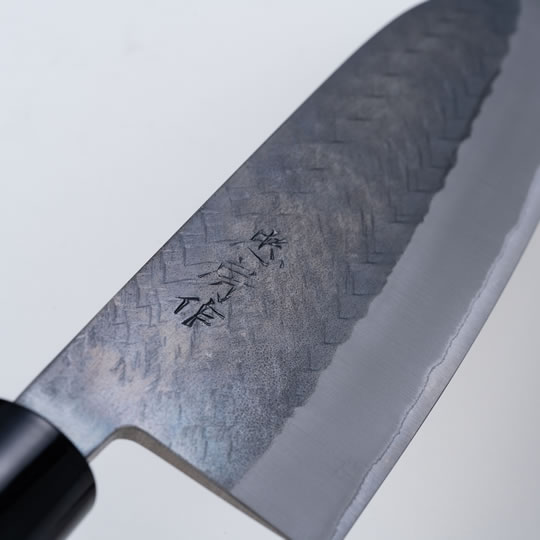When people hear of Tsubame City in Niigata Prefecture, they may think of its reputation as a "manufacturing town." With over 400 years of metalworking history, Tsubame has earned global recognition, particularly for its stainless steel products. Let's explore the history, appeal, and current developments of Tsubame's stainless steel industry.


Tsubame City Tourist Association
What is Stainless Steel?
Stainless steel is an alloy containing iron with at least 10.5% chromium, known for its resistance to rust. Thanks to this excellent corrosion resistance, Tsubame City uses it to produce various products, especially tableware and cooking utensils. However, its susceptibility to scorching requires advanced processing techniques.

Image from Tsubame city
The Origins of Metalworking in Tsubame: From Nails to Hammered Copper
Tsubame's metalworking roots trace back to the early Edo period when farmers began making traditional Japanese nails (wa-kugi) as a side business. These nails were particularly valued for their durability and their role in fire prevention, as they allowed buildings to be dismantled to prevent fire spread.
In the 1700s, influenced by the nearby Mase copper mine, the city began producing hammered copper ware (tsuiki-doki) and kiseru pipes, developing new techniques that would become the foundation of Tsubame's diverse metalworking expertise.
Image from TBS Tsubame City
The Meiji Era Transition: Birth of Western Tableware Industry
During the Meiji era, as traditional nail and kiseru pipe demand declined with Western influence, Tsubame's craftsmen sought new applications for their metalworking skills. In 1911, an order from a Tokyo importer sparked the production of Western tableware.
During World War I (1914-1918), when European tableware supplies were cut off, Tsubame received numerous orders, leading to full-scale production and eventual mechanization.
Tsubame and Sanjo: Development and Expansion
Tsubame City and neighboring Sanjo City developed complementary specialties. Sanjo focused on product development like knives and carpentry tools, while Tsubame expanded into diverse products like nails, tableware, and cooking utensils. This relationship of "Sanjo evolving products, Tsubame broadening product range" supports both regions' manufacturing industries.

Image fromTsubame shinko Industrial Co., Ltd.
Stainless Steel Technology: Challenges and Growth
In the 1950s, amid import restrictions, Tsubame began researching stainless steel processing techniques and started producing metal housewares. Despite initial setbacks, like rust complaints from U.S. exports in 1951, craftsmen persevered, improving their techniques and emphasizing design to enhance international competitiveness.
Modern Tsubame Stainless Steel Industry: The Global "Tsubame Brand"
Today, Tsubame produces such a wide range of products that it's said "there's no metalware that can't be made in Tsubame-Sanjo." Leading brands include:
・Snow Peak
A leader in outdoor equipment known globally for functional and beautiful products

Image from Snow Peak Inc.
Related Products
・Gyokusendo
A traditional hammered copperware maker producing artistic pieces since the Edo period

Image from © GYOKUSENDO.
Related Products
・Tadafusa
A high-quality knife maker respected by professional chefs

Image from © Tadafusa co.,ltd.
Tsubame companies also manufacture metal parts for Apple products, earning recognition in the technology sector.
Related Products
Future Challenges
Tsubame's stainless steel industry continues to innovate beyond tradition, focusing on training next-generation craftsmen, environmentally conscious manufacturing, and enhanced design to establish the global "Tsubame Brand." Not only stainless steel, but their sophisticated technique enables them to generate high-quality metalware products.
With 400 years of technical expertise and a spirit of innovation, Tsubame's craftsmanship continues to enrich lives worldwide. Each Tsubame product tells this ongoing story of excellence and tradition.















